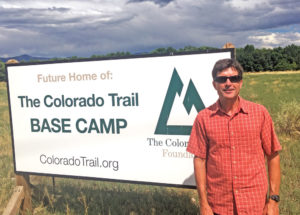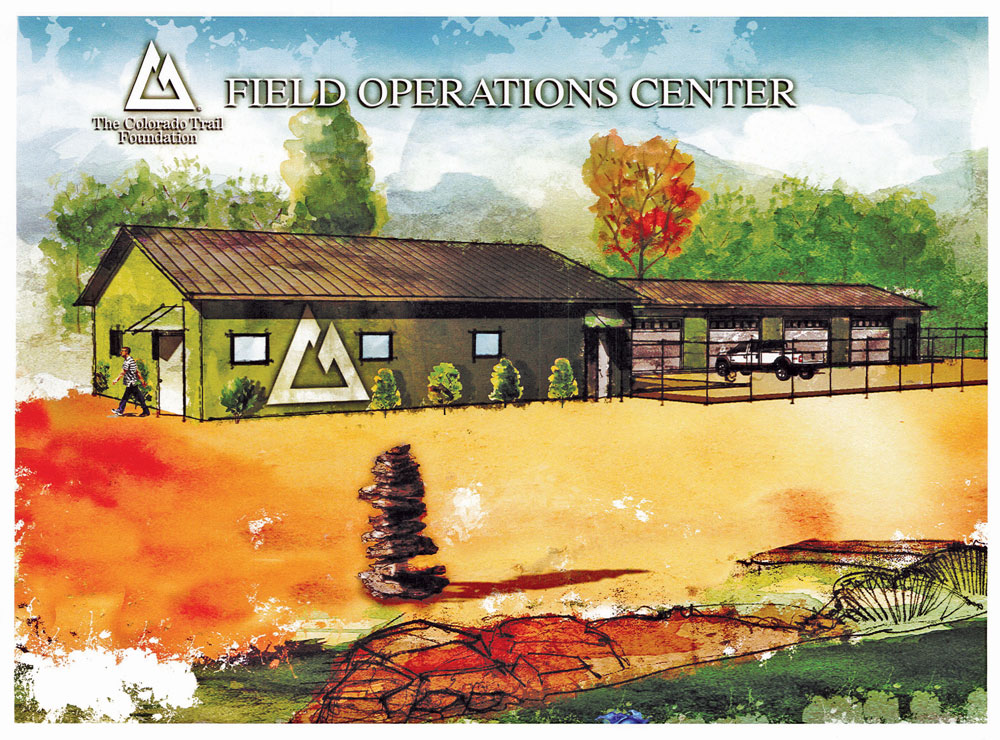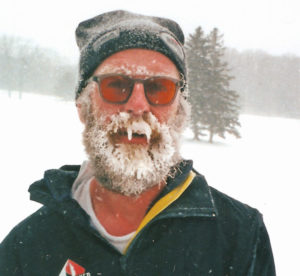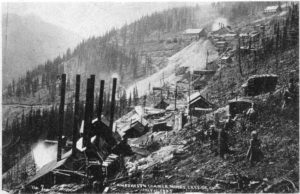By Tyler Grimes
“Mile for mile the beautiful trail in America,” boasts the Colorado Trail Foundation (CTF) of the 468-mile trail between Waterton Canyon southwest of Denver to Durango. Thousands hike the free-to-the-public trail, some day users, others straight through. “In 2015, there were 230 known CT completers, a hodgepodge of multi-year section doers and thru-travelers: hike, bike and horse,” said Bill Manning, CTF Executive Director. The CT spans five national forests through 11 ranger districts and six wilderness areas, climbing from a mile high to over 13,000 feet. “Trips range from less than an hour to more than a month,” said Manning. “Possibly the most engaged users are the thru-hikers striving to see all 486 miles in a single trip.”
The “Rocky Mountain Trail” was conceived in 1973 and completed in 1987. The trail was a collaborative effort between Colorado Mountain Club, the U.S. Forest Service (USFS), and the Colorado Mountain Trails Foundation. The Colorado Trail Foundation began the same year as the trail’s completion, with a mission to finish and maintain the trail. Ed Quillen, founder of Colorado Central Magazine, wrote about the construction of the trail in 1984 for Empire Magazine in an article titled, “Trail to Nowhere.”

If there was a cornerstone person in the trail building process it was Gudy Gaskill, “Mother of the Colorado Trail.” Gaskill, who was chair of the Colorado Mountain Club’s Huts and Trails Committee in 1974, was on the first advisory board and helped organize the trail’s planning. Her efforts led the trail from an idea, to planning, to organizing, to a cooperative agreement with the USFS, to the founding of the foundational non-profit and on to completion.
Gaskill received many accolades for her work on the trail, including the Great Outdoor Colorado service award, the Take Pride in America award from President Reagan and the One Thousand Points of Light award from President Bush in 1990. In 1988, Gaskill and a group of trail builders hiked the newly-completed trail to a dedication ceremony in Durango. Gaskill was the first board president for the Colorado Trail Foundation until she retired in 1998. The Mother of the Colorado Trail continued to serve as an advisor to the CTF board until last May, just two months before her death in July.
The CTF now has three full-time employees responsible for keeping the trail in top condition and creating new sections. Bill Manning became the first managing director in 2006 and continues as CTF’s executive director, working alongside an assistant in Golden. In the spring of 2015, the CTF replaced a volunteer vacancy by creating a new field operations manager position.
[InContentAdTwo]
Brent Adams moved to Buena Vista last year to join the foundation. He left a career as a civil engineer in Durango. As field operations manager, Adams oversees yearly trail maintenance and new trail diversions, serves as a liaison with land managers and coordinates volunteers. The Colorado Trail relies on volunteer labor to complete projects, with over 20,000 volunteer hours each year.
Adams was a friend of the trail for years before coming on staff with the CTF. He was a regular volunteer since 2005, and in 2010, he and his wife bike-packed the entire trail over a three-week period. Adams said they were able to bike nearly the entire trail other than a few hike-a-bike sections, particularly over the Ten Mile Range.
Currently, Adams and CTF are working on the construction of a Field Operations Center (FOC) in Poncha Springs. The FOC will serve as a central point for maintenance and equipment. “The CT Foundation is creating the Field Operations Center to centralize our volunteer equipment and sustain our decades-long volunteer trail maintenance programs,” said Bill Manning. “Poncha Springs is the perfect location being within 10 miles of the center of the Colorado Trail.”
The CTF purchased a $50,000 lot in Poncha and is designing the building this fall. Construction for the 1,600 square-foot shop and 200 square-foot unheated outdoor storage will begin next spring. So long as the CTF successfully raises the remainder of the $400,000 needed, the center will be complete by next August.
The Colorado Trail Foundation’s next major expansion is the Hancock Trail, a jeep roads bypass. Adams is working with the Salida Ranger District to complete the background work before construction can begin. The new trail will turn Monarch Pass to the Cochetopa Trail from motorized to non-motorized use.
To learn more about the Colorado Trail Foundation and ways to volunteer, visit Coloradotrail.org. Contact the CTF at 303-384-3729 or at ctf@coloradotrail.org.
Tyler Grimes is inspired to bikepack the Colorado Trail.




In May of 1994 I was mostly recovered from a small heart attack that cost me job, wife and home. It seemed like time for a walk. I hitched from Manitou up to Waterton and set out. The first entry in my journal that day reads, “Hittin’ th’ road with an eighty pound load and a little light emotional baggage.”
It was immediately clear that my days of blazing up the mountains were over, and now I was less a lion than an old Jeep in compound low. But it was good and, as it always has before, the High Country saved me. Where the Colorado Trail crosses FR240 above Maysville I turned left toward Salida, the town I’ve always considered home and in which I’ve never actually lived. There I was supposed to get a care package of food, a little money, cigarettes & hopefully liquor from Dear Li’l Sis back in South Carolina. The post office couldn’t find it.
I spent a couple of days, mostly on a barstool in the Vic and sleeping beside the river. I decided to take a side walk and come back to check on my package later. I sighted on Methodist Mountain, hit the Rainbow Trail and followed it to Blanca Peak, turned around and walked back along the ridgeline of the Sangres. Still no package in Salida, so I continued south on the Colorado Trail, living off the land and losing 40 pounds from an already lean frame along the way.
At the end of the trail above Durango I found a semi-permanent community on the edge of the National Forest. There were tents and vans and brush huts for homes, African drums and marijuana and communal beans at night. I stayed there for a week, then in Durango for a couple of days where I was amazed at the pretty college girls who were less amazed at me.
Hitched from there to Pine Ridge, South Dakota, hoping to join a Habitat For Humanity project on the Rez. Hitchhiking is, or at least was, pretty easy in the mountains but not so on the plains. I walked slap-damn across eastern Wyoming and part of Nebraska without a ride, arriving at Pine Ridge just as the Habitat project was closing.
I did get to meet Jimmy, but by then both of us were tired and had little to say. I hitched from there to the Blue Ridge Mountains in the northwestern tip of South Carolina, where I sit and type now. All up, it was 4-1/2 months of wandering that restored and damn near killed me. I do miss my beloved High Country; I’ve never had a bad day above timberline. Some of them I didn’t expect to survive, but they were good days.
}}}}